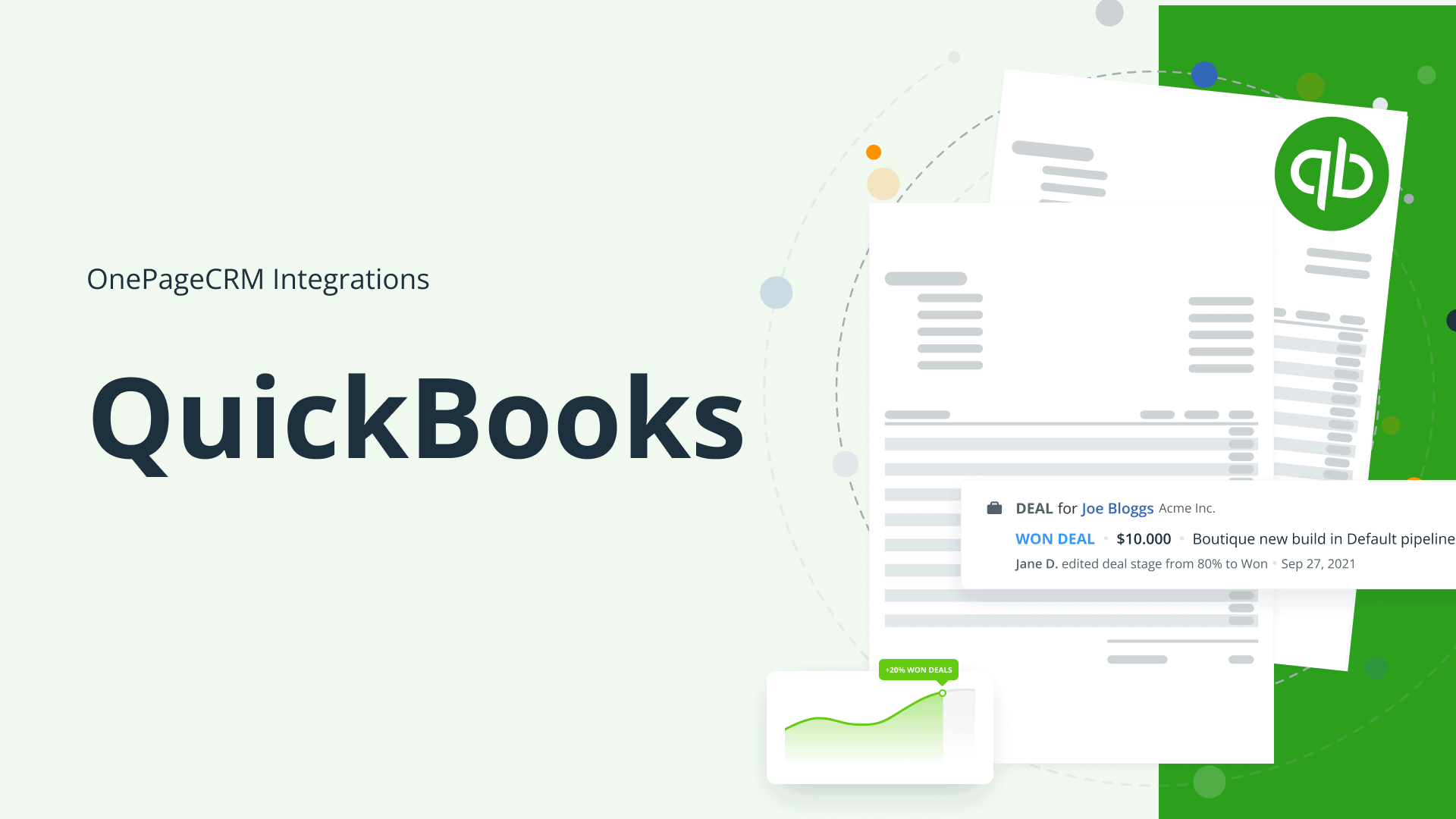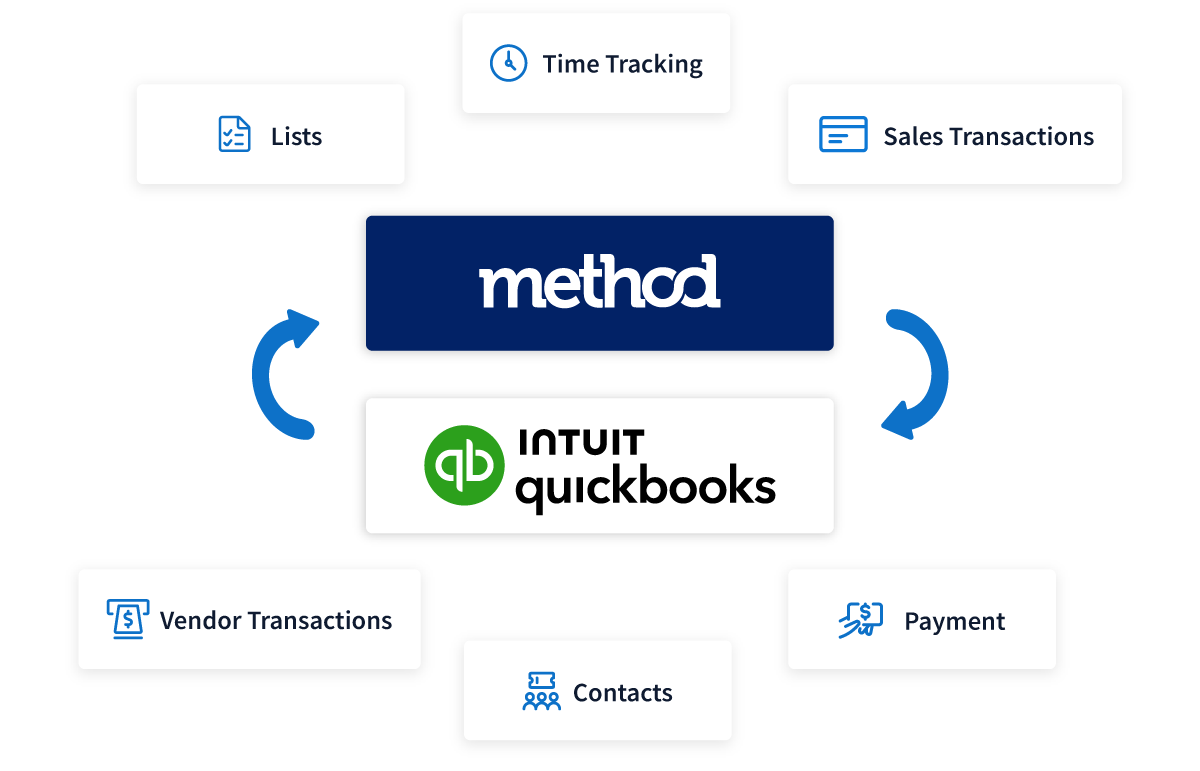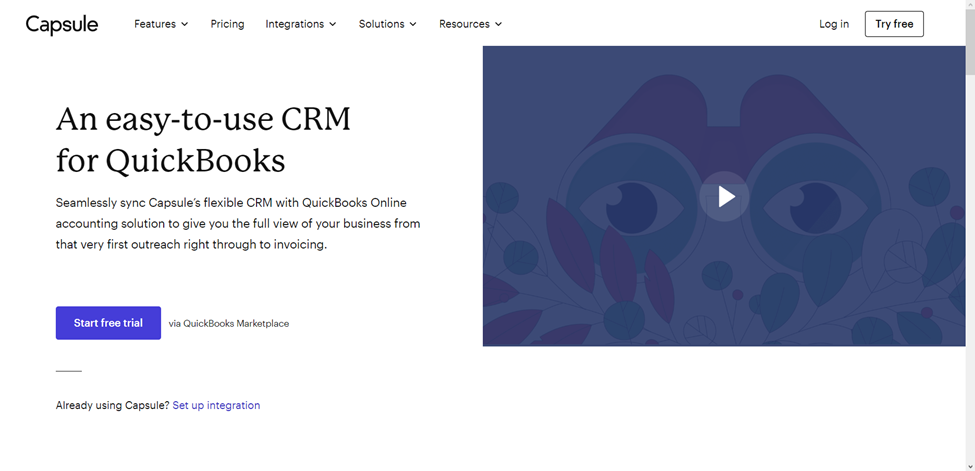QuickBooks and CRM integration is a powerful combination that can transform business operations, leading to increased efficiency, productivity, and growth. This comprehensive guide explores the benefits, challenges, and best practices of integrating these two essential software solutions.
Introduction

QuickBooks is an accounting software that helps small businesses manage their finances. It can be used to track income and expenses, create invoices and bills, and generate financial reports.
CRM (Customer Relationship Management) software helps businesses manage their interactions with customers. It can be used to track customer contact information, manage sales pipelines, and provide customer support.
Key Features and Benefits of QuickBooks
- Easy to use:QuickBooks is designed to be easy to use, even for non-accountants.
- Affordable:QuickBooks is a cost-effective solution for small businesses.
- Feature-rich:QuickBooks offers a wide range of features to help businesses manage their finances.
Key Features and Benefits of CRM
- Centralized customer data:CRM software stores all customer data in one central location, making it easy to access and manage.
- Improved customer service:CRM software can help businesses provide better customer service by tracking customer interactions and providing customer support.
- Increased sales:CRM software can help businesses increase sales by managing sales pipelines and providing sales forecasting.
Integration Benefits: Quickbooks And Crm
Integrating QuickBooks with a CRM system can significantly enhance operational efficiency and productivity for businesses. By seamlessly connecting financial data with customer information, businesses can streamline various processes, eliminate manual tasks, and gain a comprehensive view of their operations.
Improved Data Accuracy and Consistency
Manual data entry is prone to errors and inconsistencies. Integration eliminates the need for double entry, ensuring data accuracy and consistency across both systems. Automated data synchronization ensures that customer and financial information is always up-to-date and reliable.
Streamlined Sales Process
Integrating CRM with QuickBooks enables businesses to track the financial aspects of the sales cycle seamlessly. Sales representatives can create invoices and track payments directly within the CRM, providing real-time visibility into the financial status of each opportunity.
Enhanced Customer Service
With integrated systems, customer service representatives have instant access to a customer’s financial history, invoices, and payments. This allows them to quickly resolve inquiries, provide personalized support, and improve customer satisfaction.
Reduced Administrative Burden
Integration eliminates manual tasks such as data entry and reconciliation. Automated processes free up employees’ time, allowing them to focus on more strategic and value-added activities that drive business growth.
Better Decision-Making
The integration of QuickBooks and CRM provides businesses with a comprehensive view of their financial and customer data. This enables managers to make informed decisions based on real-time insights into customer behavior, sales performance, and financial health.
Best Practices for Integration
To achieve a successful integration between QuickBooks and CRM, it’s crucial to follow certain best practices that ensure seamless data flow, efficient operations, and optimal business outcomes.
Here’s a step-by-step guide to help you integrate QuickBooks and CRM effectively:
Planning and Preparation
- Define Integration Goals:Clearly Artikel the objectives you aim to achieve through the integration, such as improved customer relationship management, enhanced financial reporting, or streamlined operations.
- Choose the Right Integration Tool:Select an integration tool that meets your specific business needs, supports the required data mapping, and offers reliable performance.
- Map Data Fields:Determine which data fields in QuickBooks and CRM need to be synchronized and establish clear mapping rules to ensure data integrity.
Implementation
- Set Up the Integration:Follow the instructions provided by the integration tool to configure the connection between QuickBooks and CRM.
- Test Data Synchronization:Run test scenarios to verify that data is flowing seamlessly between the two systems and that the mapping rules are working correctly.
- Monitor and Maintain:Regularly check the integration to ensure it’s functioning properly and make any necessary adjustments to maintain data accuracy and system performance.
Continuous Improvement
- Evaluate Integration Effectiveness:Track key performance indicators (KPIs) related to the integration, such as data accuracy, time savings, and operational efficiency, to assess its impact on your business.
- Identify Areas for Optimization:Regularly review the integration process to identify areas where improvements can be made to enhance data flow, streamline operations, or reduce errors.
- Seek Professional Support:If you encounter any challenges or require additional guidance during the integration process, consider seeking professional support from a qualified consultant or integration specialist.
Case Studies and Examples

Businesses of all sizes have achieved significant benefits by integrating QuickBooks and CRM. Here are a few case studies and examples:
A small business with a team of 10 employees used to spend hours manually entering data from QuickBooks into their CRM. After integrating the two systems, they were able to automate this process, saving them a significant amount of time and reducing errors.
Increased Sales and Improved Customer Service
A mid-sized company with a team of 50 employees integrated QuickBooks and CRM to gain a complete view of their customers. This allowed them to identify opportunities for upselling and cross-selling, resulting in a 15% increase in sales. They were also able to improve customer service by tracking customer interactions and resolving issues more quickly.
Improved Efficiency and Productivity, Quickbooks and crm
A large enterprise with a team of over 100 employees integrated QuickBooks and CRM to streamline their operations. This allowed them to automate many tasks, such as invoicing, payments, and customer support. As a result, they were able to improve efficiency and productivity by 20%.
Advanced Features and Customization
Advanced features and customization options empower businesses to tailor QuickBooks and CRM integration to their specific requirements. These capabilities enable seamless data flow, automation, and personalized experiences.
Customizable fields and workflows allow businesses to adapt the integration to their unique processes. Integration platforms often provide tools for creating custom fields, mapping data, and automating tasks, ensuring a tailored fit.
Custom Dashboards and Reporting
Businesses can create custom dashboards and reports that combine data from both QuickBooks and CRM systems. This provides a comprehensive view of key metrics, allowing for informed decision-making and improved business performance.
Data Security and Compliance
Data security and compliance are critical concerns when integrating QuickBooks and CRM systems. It is essential to ensure the confidentiality, integrity, and availability of data throughout the integration process.To safeguard data, organizations should implement robust security measures, including:
- Encryption of data at rest and in transit
- Role-based access controls to limit data access to authorized personnel only
- Regular security audits and penetration testing to identify and address vulnerabilities
- Compliance with industry regulations and standards, such as PCI DSS and HIPAA
Additionally, organizations should establish clear policies and procedures for data management, including data retention, backup, and disaster recovery plans.
End of Discussion
By carefully considering the factors discussed in this guide, businesses can successfully integrate QuickBooks and CRM to achieve their full potential. With improved data management, streamlined processes, and enhanced customer relationships, organizations can unlock new levels of success.
Essential FAQs
What are the key benefits of integrating QuickBooks and CRM?
Improved data management, streamlined operations, increased efficiency, enhanced customer relationships, and better decision-making.
What are some common challenges faced during QuickBooks and CRM integration?
Data compatibility issues, security concerns, and user adoption challenges.
What are the best practices for successful QuickBooks and CRM integration?
Define clear integration goals, choose the right integration tool, ensure data accuracy, test thoroughly, and provide ongoing training.

